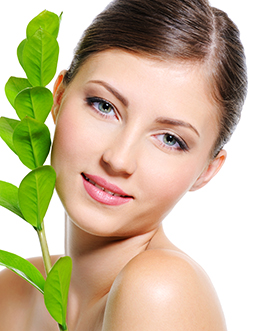Natural personal care products continue to make waves across categories, appealing to increasingly demanding consumers looking for the next best natural product that meets their performance expectations and is more rooted in nature. In the following interview, beauty expert Naira Aslanian reveals some highlights from our just-published Natural Personal Care Global Series report.
How does Kline define the natural personal care market?
Our natural personal care segment includes all brands that position themselves as “natural.” Our knowledgeable chemical experts analyze a brand’s ingredients and assigns it a rating of 1 to 10. Based on these ratings, the market is divided into two categories:
- Brands with a rating of one to four, which we define as natural-inspired.
- Brands with a rating of five to ten, which we define as “truly natural.” These are products formulated with a higher proportion of natural or organic ingredients.
The natural personal care market recorded robust growth in 2016, showing a 9% increase in the United States and 8% in the United Kingdom. What’s backing this growth?
There are many factors involved behind this dynamic growth. Overall, the concept of beauty has evolved in the past several years, becoming part of a holistic approach to self-care, which promotes eating healthy, managing stress, and taking supplements. In line with this lifestyle shift, consumers choose products that are natural or, at the very least, perceived to be natural. Some brands infuse their products with plant extracts and oils, while making claims of exclusion of known synthetic ingredients. Other brands, such as Tata Harper, Farmacy, and Nu Skin, take the concept of naturalness to the next level, with the farm-to-face concept, super foods, and antioxidants.
Which product categories are booming?
Skin care accounts for the majority of sales in both markets analyzed. In the United States, hair care records the highest growth of almost 11% in 2016 as consumers increasingly opt for hair care products with key labeling, such as “No Sulfate,” to help with color-preservation. In the United Kingdom, oral care posts double-digit growth supported by the good performance of natural lip balms and multi-functional natural oral care products.
Can you please name a few brands that stood out in 2016?
In the truly natural category, we’ve seen triple growth rates from new and exciting brands like Farmacy, Honest Beauty, and Beautycounter. In the natural-inspired category, SheaMoisture continues to make strides, expanding its product offerings into the skin care and personal cleansing categories.
What’s next in natural beauty?
The market outlook is positive with a high single-digit growth rate expected to be recorded over the next five years. As natural products will become more mainstream in the future, we foresee that truly natural brands will grow at a faster pace than natural-inspired brands. To reach a larger audience, natural marketers will have to strengthen product efficacy claims through certifications and clinical trials as consumers are increasingly less convinced by “natural” claims alone.
To learn more about this dynamic market, please refer to our recently published Natural Personal Care Global Series report featuring key trends, developments, challenges, business opportunities, natural ingredient ratings, certification standards, and various sales breakdowns on two of the largest and most advanced markets for natural personal care: the United Kingdom and the United States. The analysis also includes a granular look at the natural and organic segment of the facial skin care category.

